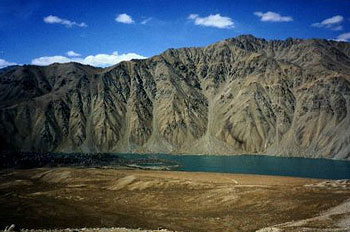Add your site

Submit your web site to 100% SEO friendly, human edited travel directory with high quality links and improve your search rankings.
Get listed now!

A Persian-speaking outpost in a predominantly Turkic region, Tajikistan is the odd man out in Central Asia. The country is a patchwork of self-contained valleys and regional contrasts, forged together by Soviet nation-building and shared pride in a Persian cultural heritage that is claimed as the oldest and most influential in the Silk Road region. That Tajikistan was the most artificial of the five Soviet-fashioned Central Asian republics is tragically illustrated by the bloody way it fell apart as soon as it was free of Moscow rule.
Best time to visitApril to June September to November.
Essential ExperiencesDriving from Khojand to Dushanbe through a vertical world of towering peaks with jaw-dropping high-altitude lakes and deserts Hiking in the Fan Mountains Visiting the turquoise lskander-Kul lake Being overwhelmed by the Wakhan Corridor, a remote and beautiful valley peppered with forts, Zoroastrian ruins and spectacular views of the Hindu Kush Wandering in lstaravshan’s backstreets and attending the Tuesday bazaar.
Getting under the skinRead works by Tajikistan’s most popular living writer, Taimur Zulfikarov, or Kim by Rudyard Kipling-the story of the Raj during the 19th-century cold between Russia and Britain in which the region became embroiled.
Listen to Falak, a popular form of melancholic folk music, often sung a capella.
Watch The Beginning and the End directed by Tajikistan’s Sayf Rahim.
Eat Krutob (a wonderful rural dish of bread, yogurt, onion and coriander in a creamy sauce) or snack on a nahud sambusa (chickpea samosa).
Drink the sickly sweet cola and luminous lemonades manufactured in Dushanbe or Khorog.
In a wordAssalom u aleykum (peace be with you).
TrademarksMountains, civil war, the Silk Road, Persian culture.
SurprisesSogdian, the 35ng4a franca 6f the S532 R6ad widely spoken in the 8th century, is still heard in the mountain villages of the Zeravshan Valley; most Tajiks are Sunni Muslims, but Pamiri Tajiks of the Gorno-Badakhshan region belong to the lsmaili sect of Shia lalam, and thereforen have no formal mosques.
Traditional Tajik dress for men includes a heavy, quilted coat (chapan), tied with a sash that also secures a sheathed dagger, and a black embroidered cap (tupi), which is similar to the Uzbek doppilar. Tajik women could almost be identified in the dark, with their long, psychedelically coloured dresses (kurta), matching headscarves (rumol), striped trousers worn under the dress (izor) and bright slippers.
© 2025, by Travel and Tourism Directory